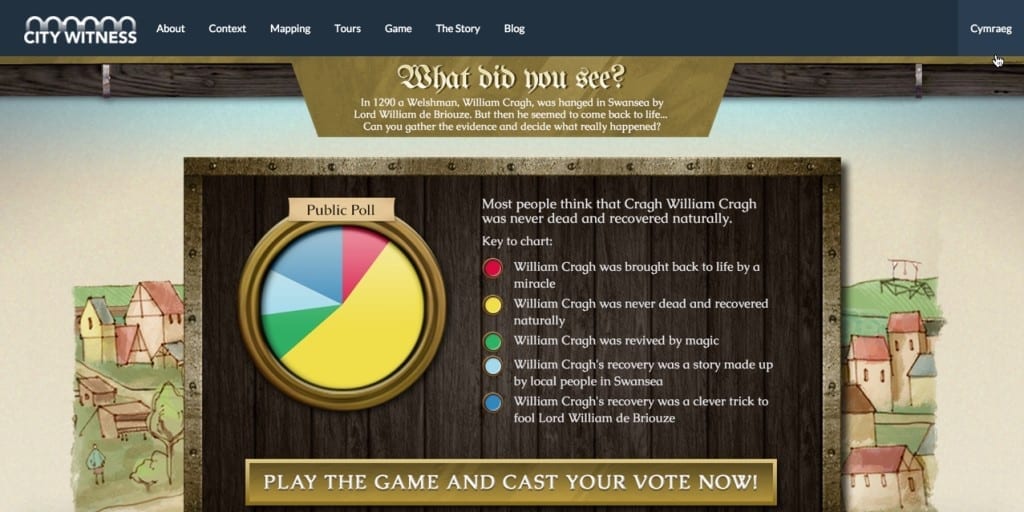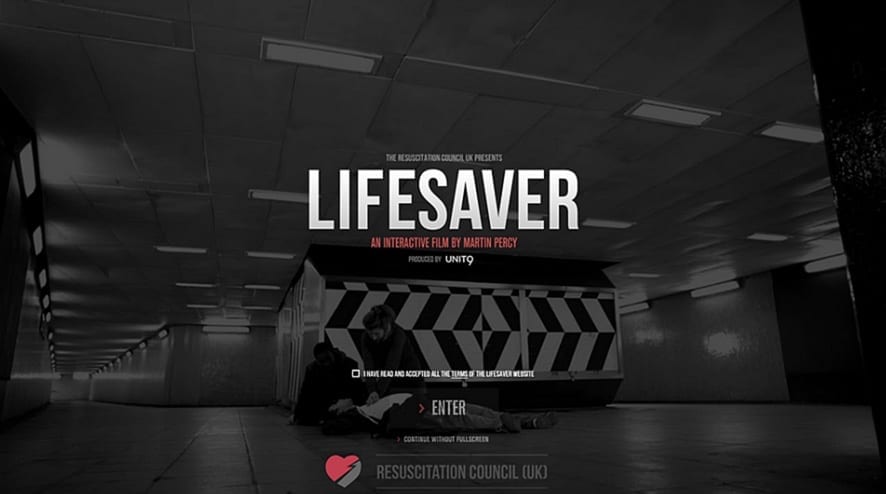Are your learners disengaging with your courses? Do you find it a constant battle to keep learners motivated? Modern learners are sick of the same old, boring elearning courses. In this article, Steve Penfold will show you how to use gamification to create more effective elearning.
Organizations are using gamification to increase learner motivation and engagement. Instead of simply teaching learners a theory or topic, elearning with inbuilt gamification can help learners improve their skills by testing and rehearsing real-life scenarios.
By completing learning in a safe environment, you can give learners the confidence to test their skills and then learn from their mistakes.
Let’s look at three elearning programs that are doing a good job of using gamification.
City Witness: Medieval Swansea
Medieval Swansea is an interactive historical game that enables learners to take on the role of detective to solve a mystery. City Witness uses Elucidat to build interactive challenges and quests into the course.
Instead of using a boring click-and-read course to teach learners about Swansea’s historical past, City Witness uses branching scenarios to take learners to different areas of the course in which they are interested.
As each stage is completed, learners are given feedback on their answers and introduced to new stages and characters.
Gamification features we like:
- Interactive scenario-driven challenges and quests.
- Each stage is narrated with a story that introduces new character witnesses.
- A dynamic map shows learners what stage they are at and what’s left to do.
- Dynamic polling is used to let learners vote on answers to solve a mystery and then check to see how other learners voted.
- Stages can only be unlocked once enough points and bonuses have been accumulated.
Resuscitation Council UK: LIFESAVER “Crisis Simulator”
LIFESAVER is a simulation game that uses interactivity and live-action film to teach cardiopulmonary resuscitation (CPR).
Teaching CPR traditionally involves face-to-face training. Since it’s complex and has limited room for error, successful CPR elearning programs have not been popular.
But LIFESAVER, by the Resuscitation Council UK and Unit9, uses game-based design to give learners an immersive experience that feels like a real-life situation. This scenario helps to simulate the steps required to complete CPR.
Time-based decision-making activities are used to challenge learners on how to go about resuscitating a person. Learners score points based on the accuracy of their answers and – more importantly – the speed at which the questions are answered (because we all know speed is important when carrying out CPR).
Gamification features we like:
- Game-based and experiential design.
- Timed decision-making activities.
- Strong storyboarding and scripting.
- Real-time progress stats and points.
- Feedback at each decision level.
Duolingo: Reinventing language learning on an epic scale
Duolingo is a language learning platform used by more than 70 million people. Gamification is built into every lesson to make learning another language fun and addictive.
The learning is self-paced. Content is delivered in small chunks and learners can set daily goals to hold themselves accountable.
As learners progress through the course, a roadmap is provided to show how far they’ve gone and how far they have to go. This provides learners with a sense of accomplishment to keep them motivated, and a strong goal to keep them on track.
Duolingo students often have different starting levels of knowledge. For example, someone might know a little bit of Spanish whereas another might know nothing. Duolingo uses placement tests to help learners start on the right level.
Gamification features we like:
- Currency (lingot) is earned by completing a variety of activities.
- Points, leaderboards, and currency rewards are used to motivate learners.
- New levels open up only when you complete the previous levels.
- Sharing features enable collaboration with friends and family.
- A voting feature lets learners vote on the best translation submitted by other learners. This game-like challenge keeps learners striving to improve themselves.
Next step: Gamify your elearning
Modern learners are bored of click-and-read learning. Gamification can help you engage and motivate learners so they actually want to complete your courses. Instead of relying on old ways, take advantage of new technologies, like Elucidat, to create courses that challenge learners with games, points, and leaderboards.
Stay on top of the latest elearning ideas, trends, and technologies by subscribing to the Elucidat weekly newsletter.
Written by: Steve Penfold
Steve Penfold is Customer Success Director at Elucidat, the simple and intuitive authoring tool. He helps large companies use Elucidat to deliver more effective elearning 50% faster.



